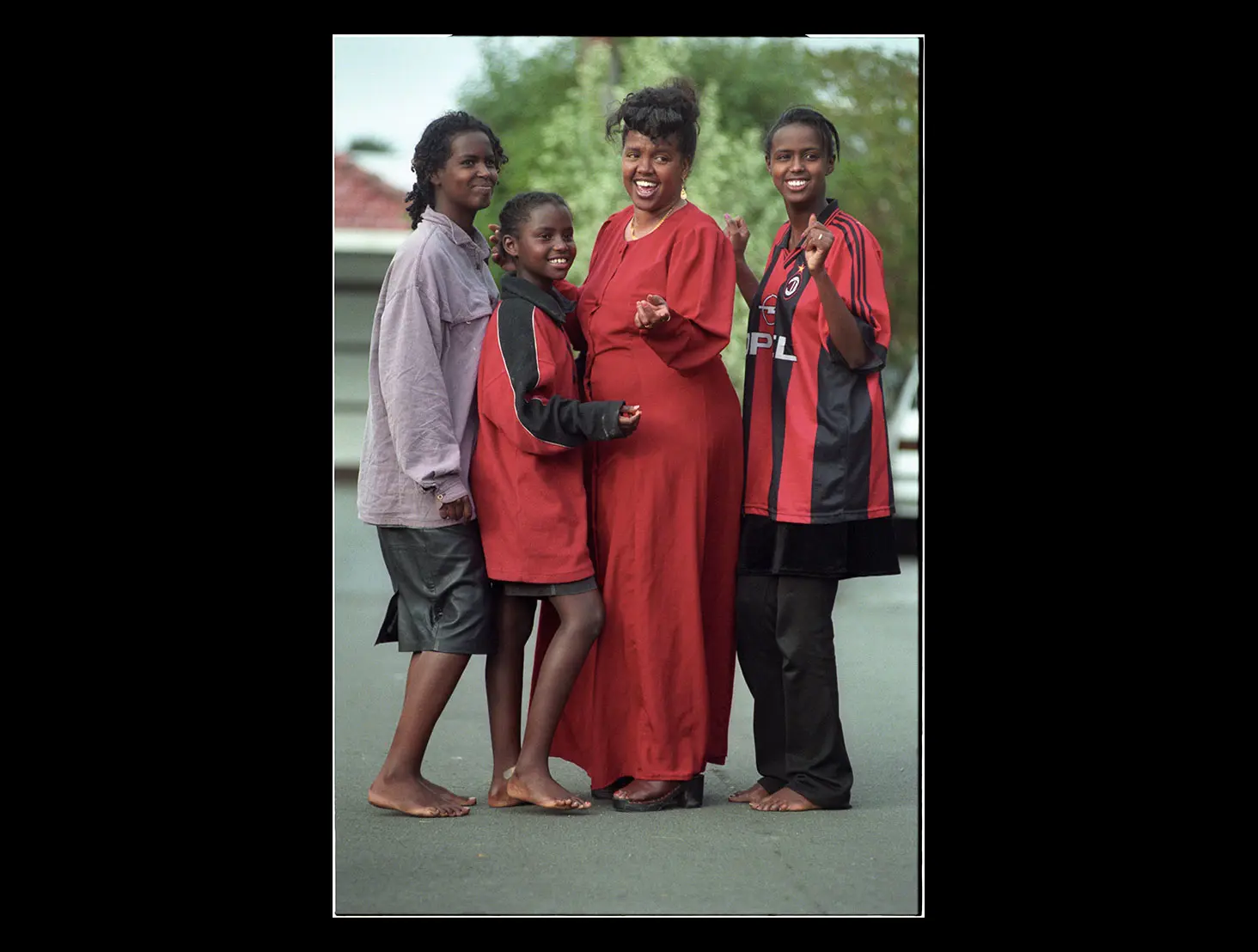Read a story about Somalian refugees settling in Aotearoa New Zealand
Since the catastrophe of the Second World War, New Zealand has been part of a network of countries providing a haven for refugees — those displaced by, or fleeing from, war, conflict or oppression in their own countries. In return, refugees arriving in New Zealand have helped create an increasingly vibrant and diverse national culture.
This photograph of Sarah Said and her daughters comes from the Turnbull Library’s Dominion Post Collection, an invaluable documentation of people’s lives and activities in the Wellington region. Said is one of many refugees who have found new homes here, in the process often sacrificing much of what they built in their lives before. In the 1970s, Said was a pop star in Somalia, with a string of hits behind her, including her biggest, a love song recorded in 1973 when she was just 13 and that launched her career. Seventeen years later, war disrupted her life and she fled her homeland.
When interviewed by the Evening Post in Lower Hutt in 1997, Said was living with her six children and surviving on a part-time cleaning job. Her singing consisted mainly of requests from friends at parties. The 1999 photo was a publicity shot for a Lower Hutt fundraising concert in which she was performing, her first professional gig with her seven-piece band, the Somali Pacific Stars.
In the 1940s and 1950s, New Zealand took in refugees mostly from European countries. In the 1970s, refugees began coming from Southeast Asia, as well as Iran and Chile. Between 1993 and 1999, around 80 per cent of the refugees accepted under the Refugee Quota Programme came from Iraq, Somalia, Vietnam and Ethiopia, with more than 20 per cent from Somalia.
Since 1988, Somalia had been torn apart by civil war and factional fighting. Many civilian Somalis fled to Kenya, where they often spent years in a refugee camp waiting to be resettled in a new country. Initially, in 1993, New Zealand had agreed to take 94 refugees, but many had left children and other family behind, assuming that once they were settled in their new homes, the rest of their families could follow. Partners, parents and children were often separated for years before they were finally able to reunite.
The Sarah Said photograph is part of a ‘refugees’ file in the Dominion Post Collection. It documents the arrival and settling of refugees from Czechoslovakia, Yugoslavia, Uganda, Chile, Vietnam, Cambodia, Laos, Russia, Sri Lanka, Iran, Iraq and Ethiopia, as well as Somalia.
Story written by: Jenni Chrisstoffels
Copyright: Turnbull Endowment Trust
Find out more
Read connected stories from Te Kupenga:
Explore the Alexander Turnbull Library collections further:
Topic Explorer has Refugees.
Many Answers has:
Want to share, print or reuse one of our images? Read the guidelines for reusing Alexander Turnbull Library images.
Curriculum links
